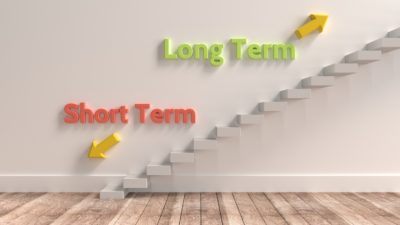If I had no savings, then any idea of passive income would seem a long way off. Unfortunately, this is the reality for anyone who hasn’t started using their ISA allowance yet.
But let’s say I had an empty ISA and nothing else. I think I could target a £3,134 monthly passive income, even without saving anywhere near the yearly deposit limit. Here’s how.
My strategy begins with saving a little cash. After all, my ISA won’t do anything while it’s still empty, and the more money I can put in there, the more passive income I can work towards.
Passive income stocks: our picks
Do you like the idea of dividend income?
The prospect of investing in a company just once, then sitting back and watching as it potentially pays a dividend out over and over?
If you’re excited by the thought of regular passive income payments, as well as the potential for significant growth on your initial investment…
Then we think you’ll want to see this report inside Motley Fool Share Advisor — ‘5 Essential Stocks For Passive Income Seekers’.
What’s more, today we’re giving away one of these stock picks, absolutely free!
I think £250 per month seems like a good starting point. At £3,000 a year, it’s miles away from the ISA deposit limit of £20,000. Regardless of the amount, all my earnings from the account are mine rather than the taxman’s.
The problem though, and a very big one at that, is that saving alone is not nearly enough.
| £250 a month | |
| 1 year | £3,000 |
| 5 years | £15,000 |
| 10 years | £30,000 |
| 20 years | £60,000 |
| 30 years | £120,000 |
Even if I had to scrimp and save to build this, after 10 years I’ve only got £30,000. After two decades, I would have less than the average house deposit.
A Cash ISA would give me better returns, it’s true. I can get up to 6% in some accounts right now, and the interest I get is guaranteed. On the surface, that sounds like a good way to grow my money.
8% inflation
But 6% means I’m losing money in real terms compared to 8%+ levels of inflation. And the return I get from these accounts is always tied to interest rates and therefore inflation. If I’m not beating inflation, then I’m not actually growing wealth.
The solution instead is a Stocks and Shares ISA. Investing in stocks has proven for decades and centuries to be the best wealth-building tool the average person has available to them. I use my ISA to invest, to own a small part of a company. As it makes money and grows, my money grows too.
The return from investing in stocks and shares is variable. Here are a few examples.
| £250 a month | ||||
| 0% | 7% | 10% | 13% | |
| 1 year | £3,000 | £3,113 | £3,160 | £3,207 |
| 5 years | £15,000 | £17,890 | £19,293 | £20,784 |
| 10 years | £30,000 | £43,005 | £50,364 | £59,078 |
| 20 years | £60,000 | £127,602 | £180,997 | £259,621 |
| 30 years | £120,000 | £294,016 | £519,823 | £940,379 |
This table really shows the power of a Stocks and Shares ISA. And the difference between the 7% return and the 13% return shows how important good stock choices are.
The 10% return is what many people aim for with stocks. It’s in line with the historical returns from big firms in the US and UK. For this reason, a lot of investors like to put money in funds that track an entire stock market index.
Please note that tax treatment depends on the individual circumstances of each client and may be subject to change in future. The content in this article is provided for information purposes only. It is not intended to be, neither does it constitute, any form of tax advice. Readers are responsible for carrying out their own due diligence and for obtaining professional advice before making any investment decisions.
£3,134 a month
This strategy isn’t risk-free. No returns are guaranteed and many individual companies do go bankrupt. I can limit these risks with diversification, and I do make sure my holdings are spread out across many sectors.
If I was to build my empty ISA up to that £940,379 value, I could then safely withdraw at 4% yearly. As a passive income, that would give me an attractive-sounding £3,134 a month. In the future, that would be worth less due to inflation, but still, it shows why I see investing as the best path to another income stream.








